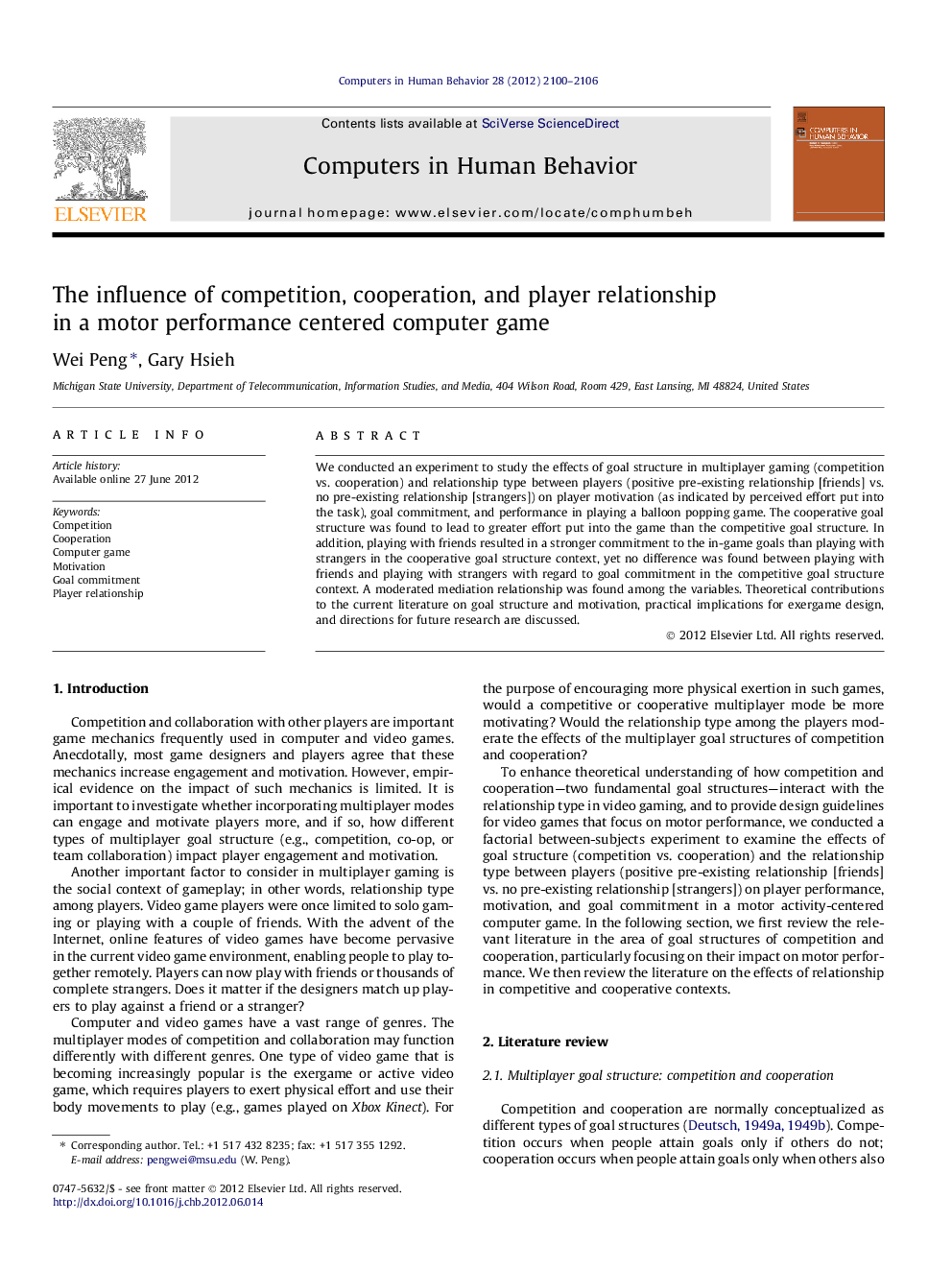| Article ID | Journal | Published Year | Pages | File Type |
|---|---|---|---|---|
| 351296 | Computers in Human Behavior | 2012 | 7 Pages |
We conducted an experiment to study the effects of goal structure in multiplayer gaming (competition vs. cooperation) and relationship type between players (positive pre-existing relationship [friends] vs. no pre-existing relationship [strangers]) on player motivation (as indicated by perceived effort put into the task), goal commitment, and performance in playing a balloon popping game. The cooperative goal structure was found to lead to greater effort put into the game than the competitive goal structure. In addition, playing with friends resulted in a stronger commitment to the in-game goals than playing with strangers in the cooperative goal structure context, yet no difference was found between playing with friends and playing with strangers with regard to goal commitment in the competitive goal structure context. A moderated mediation relationship was found among the variables. Theoretical contributions to the current literature on goal structure and motivation, practical implications for exergame design, and directions for future research are discussed.
► Competitive and cooperative goal structure results in similar performance in game. ► Cooperative goal structure leads to greater motivation and effort. ► Cooperative goal structure leads to greater goal commitment for friends.
